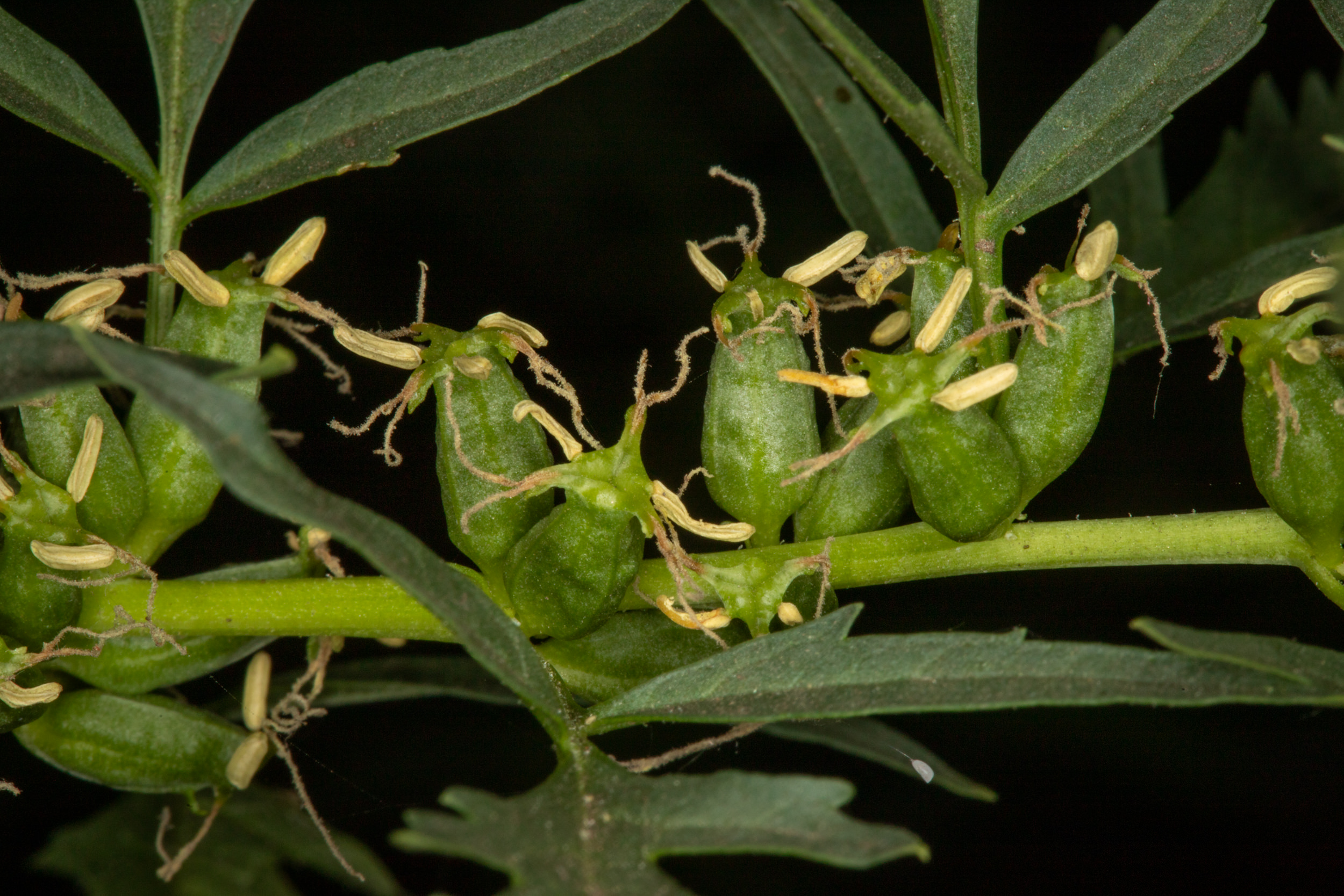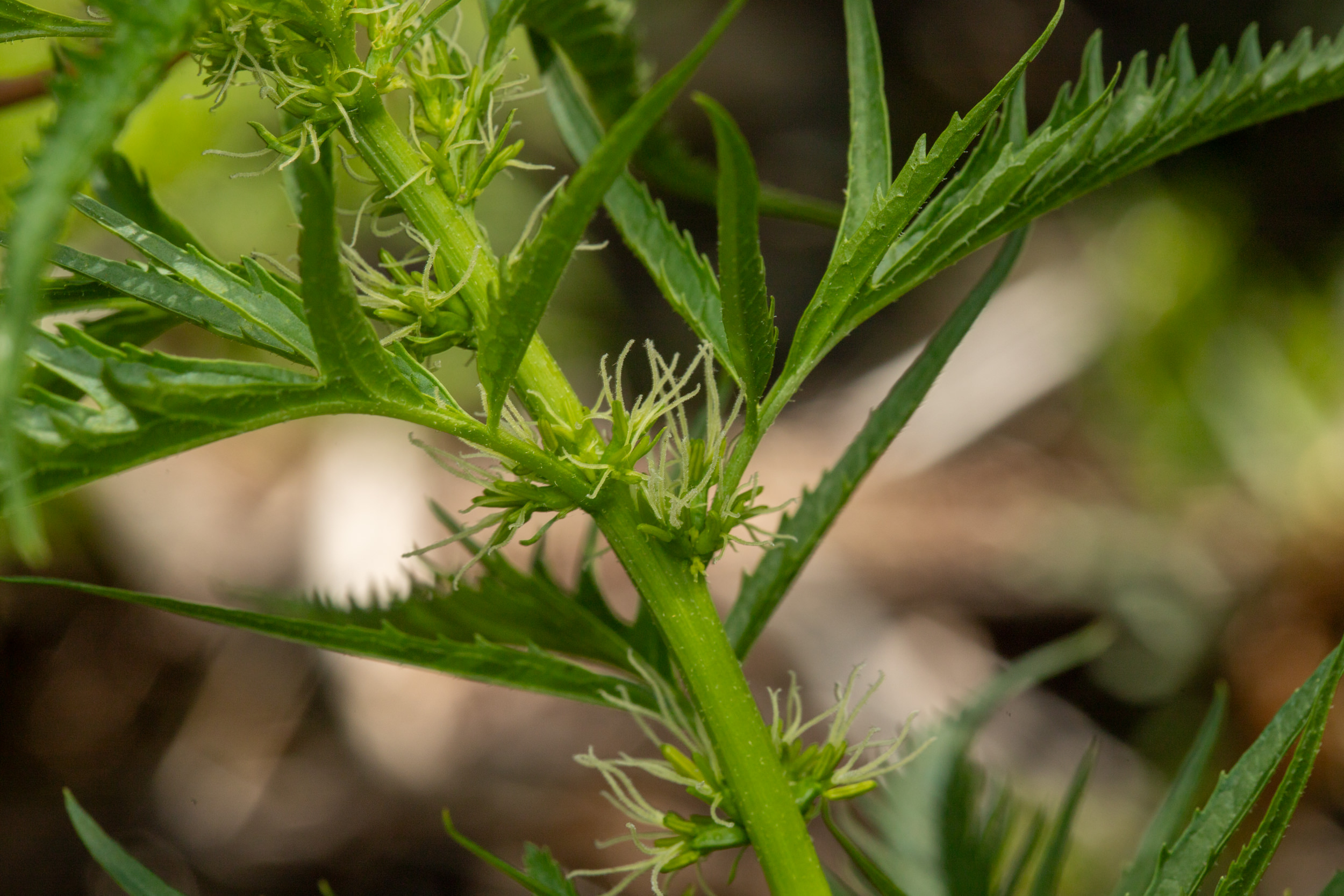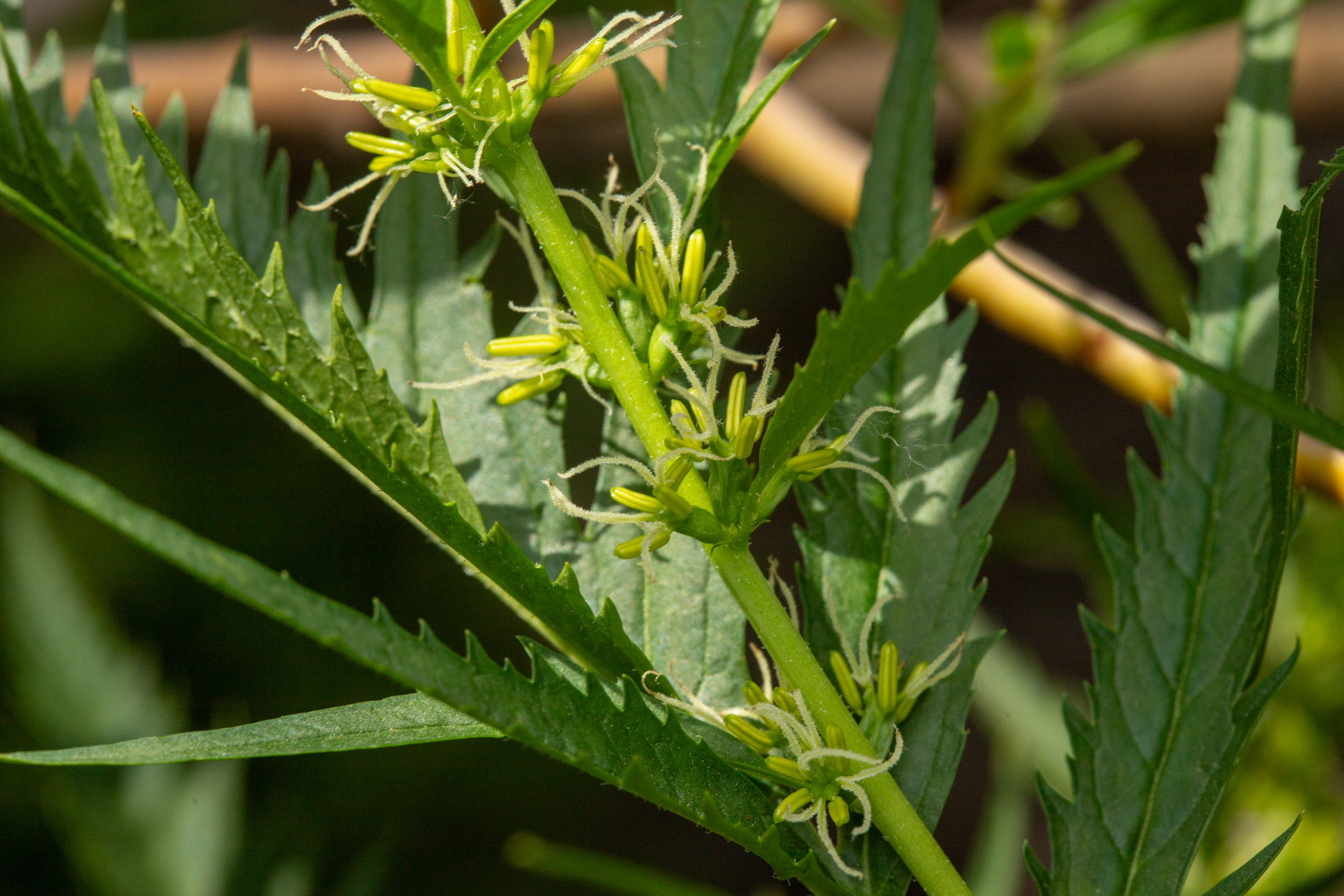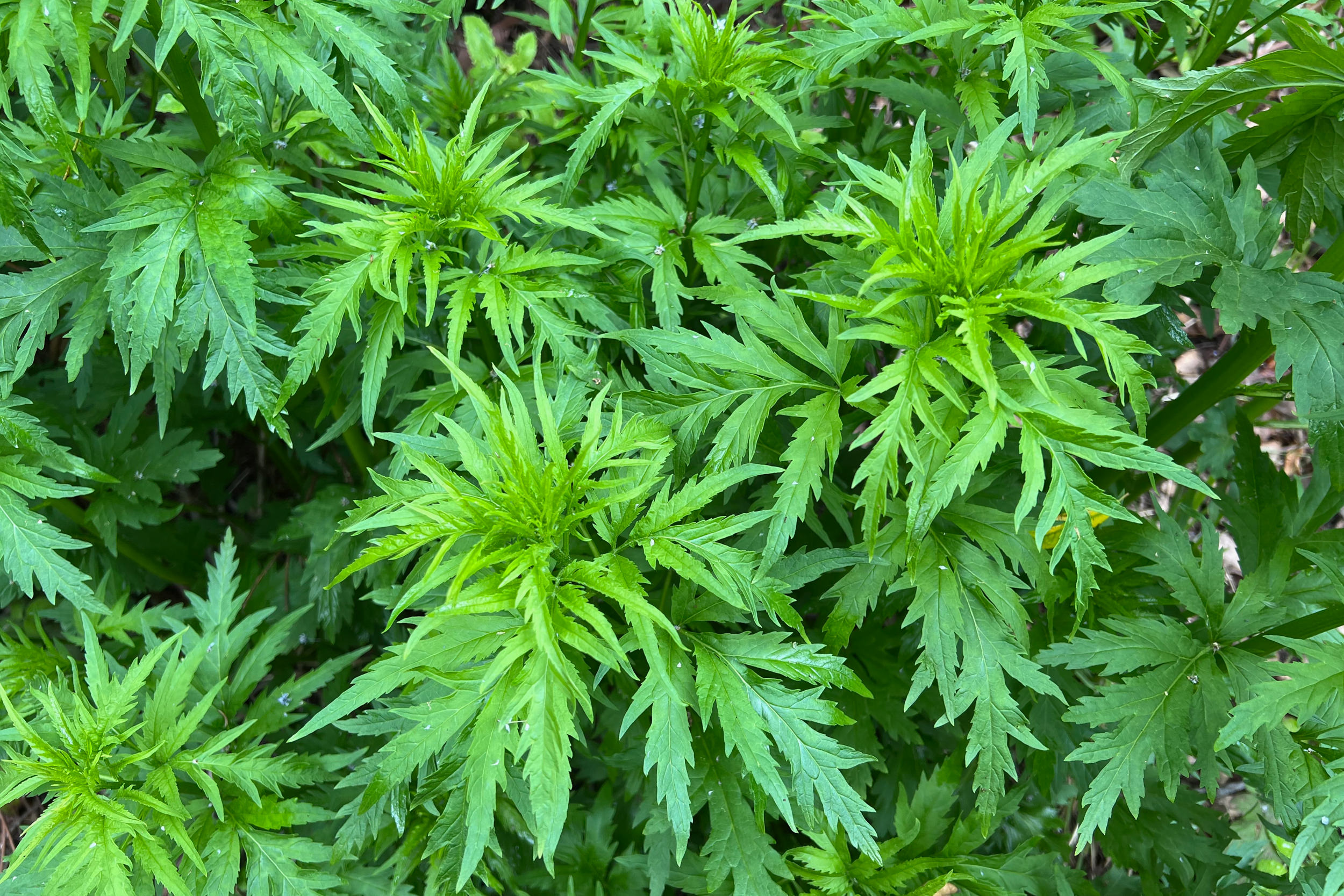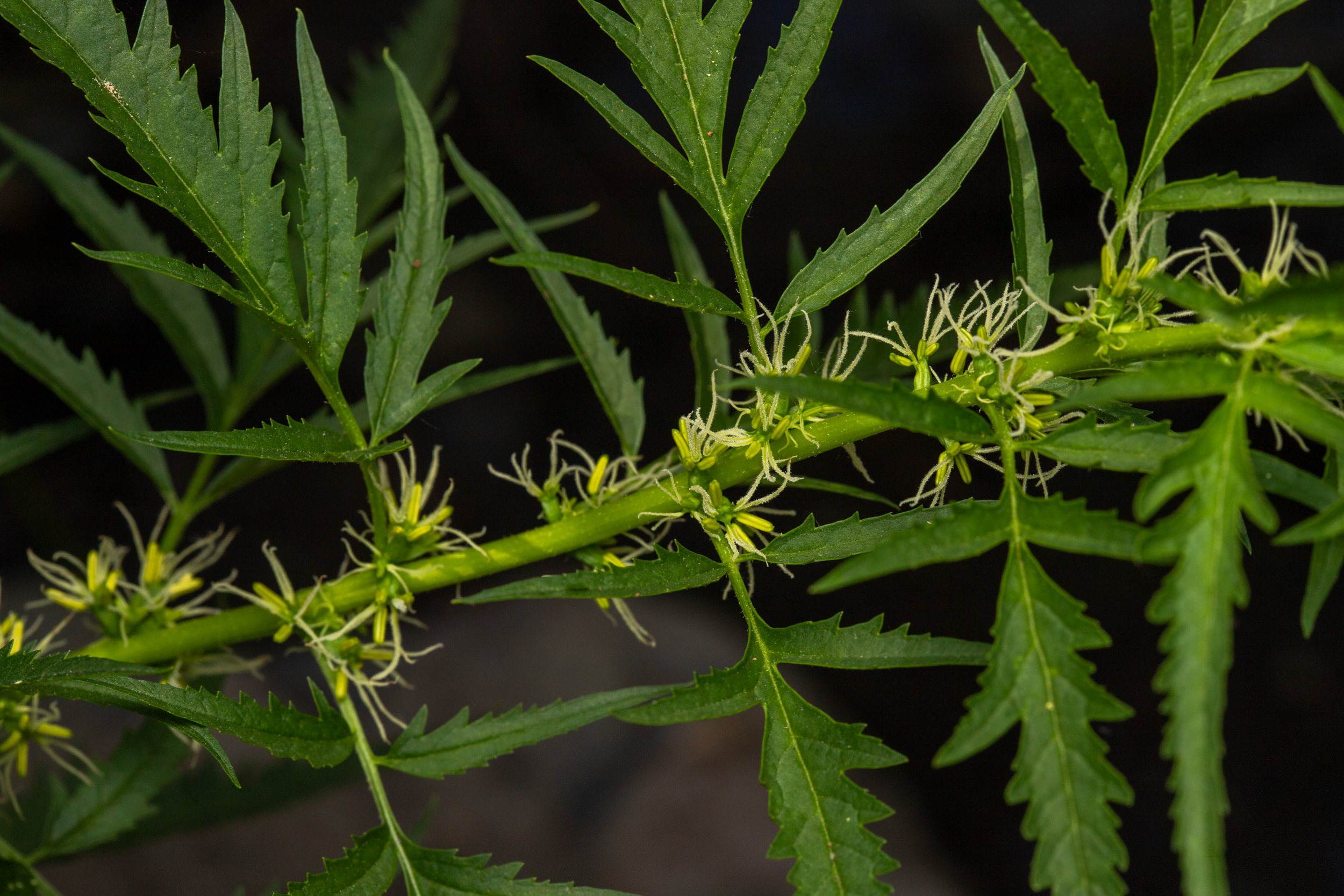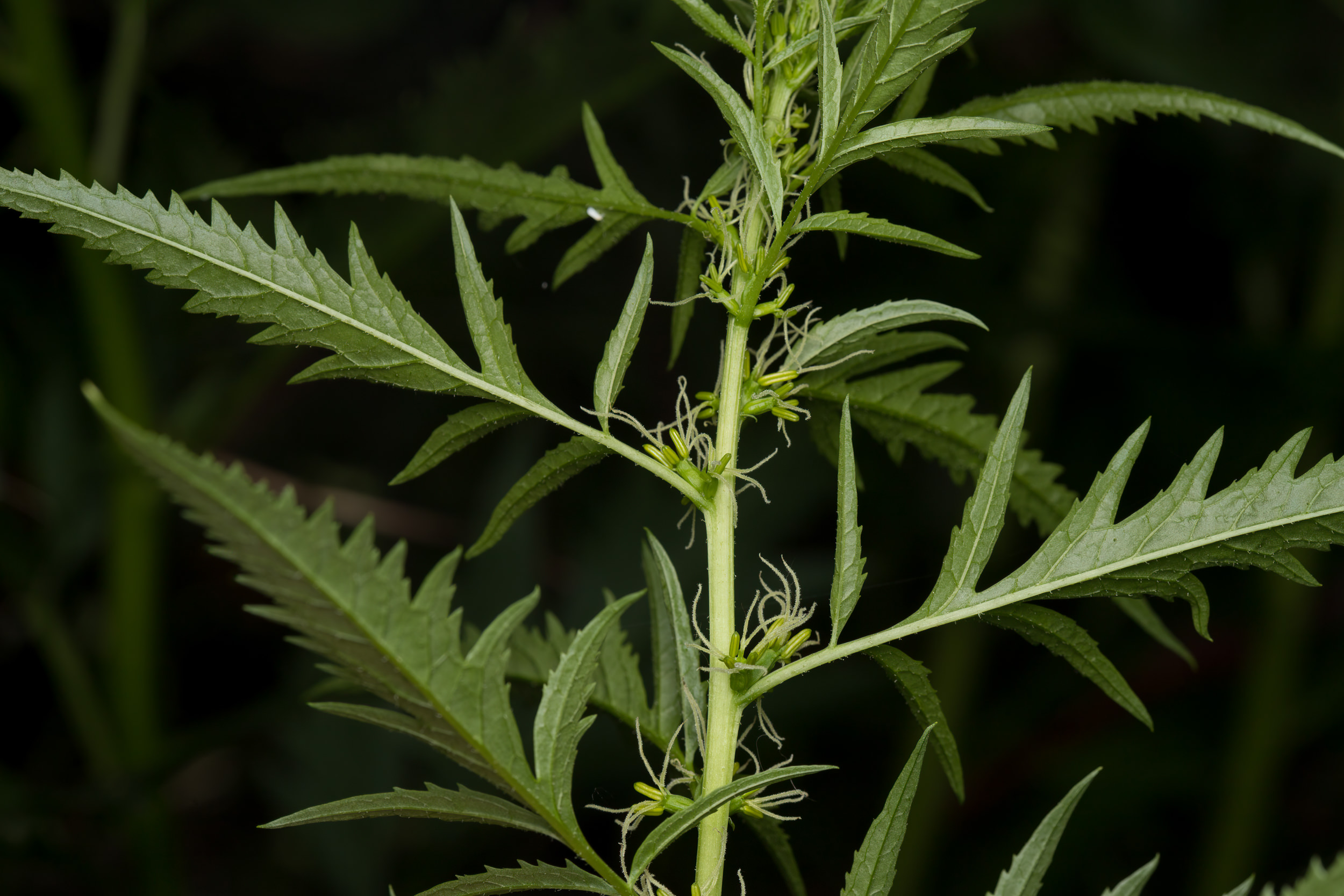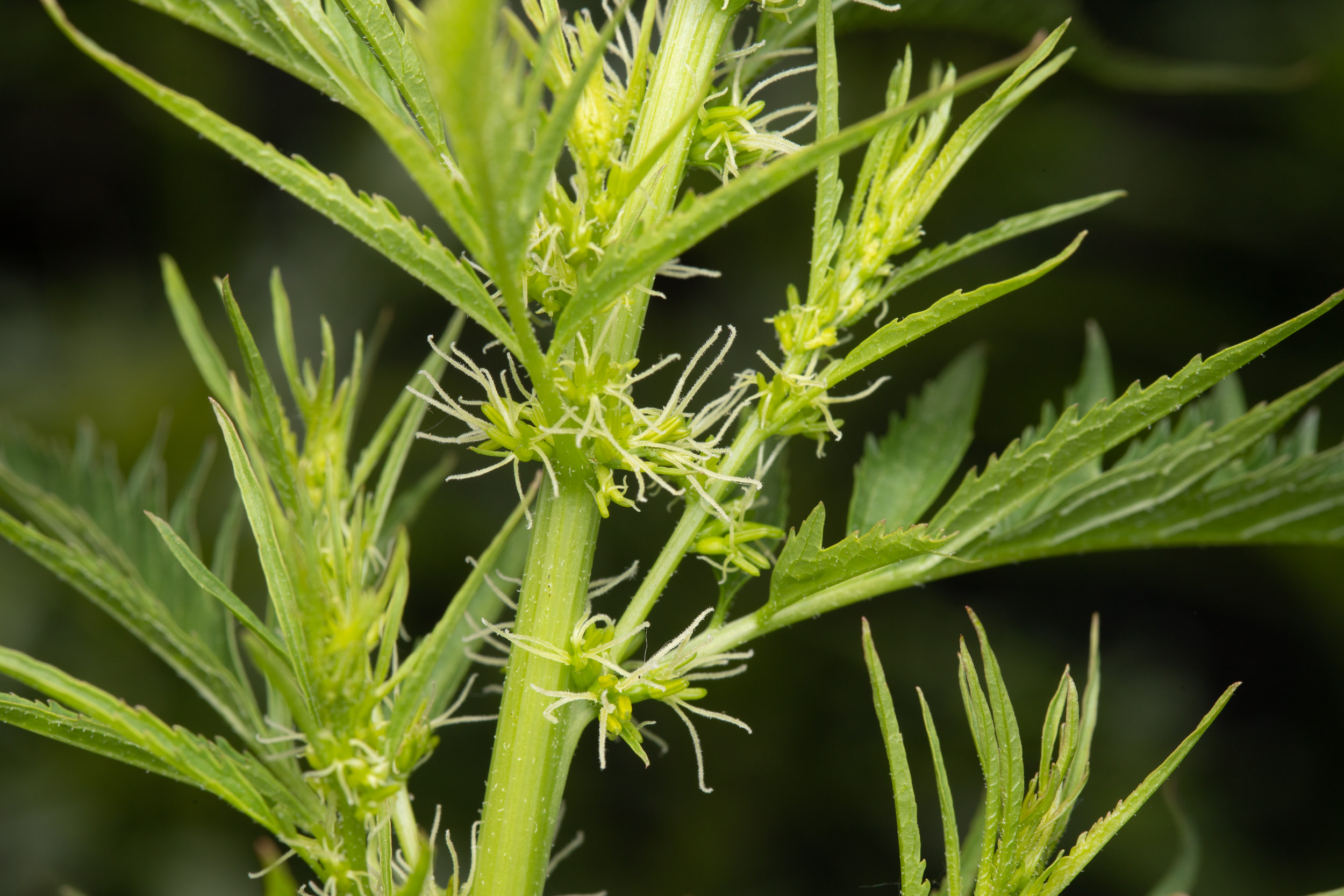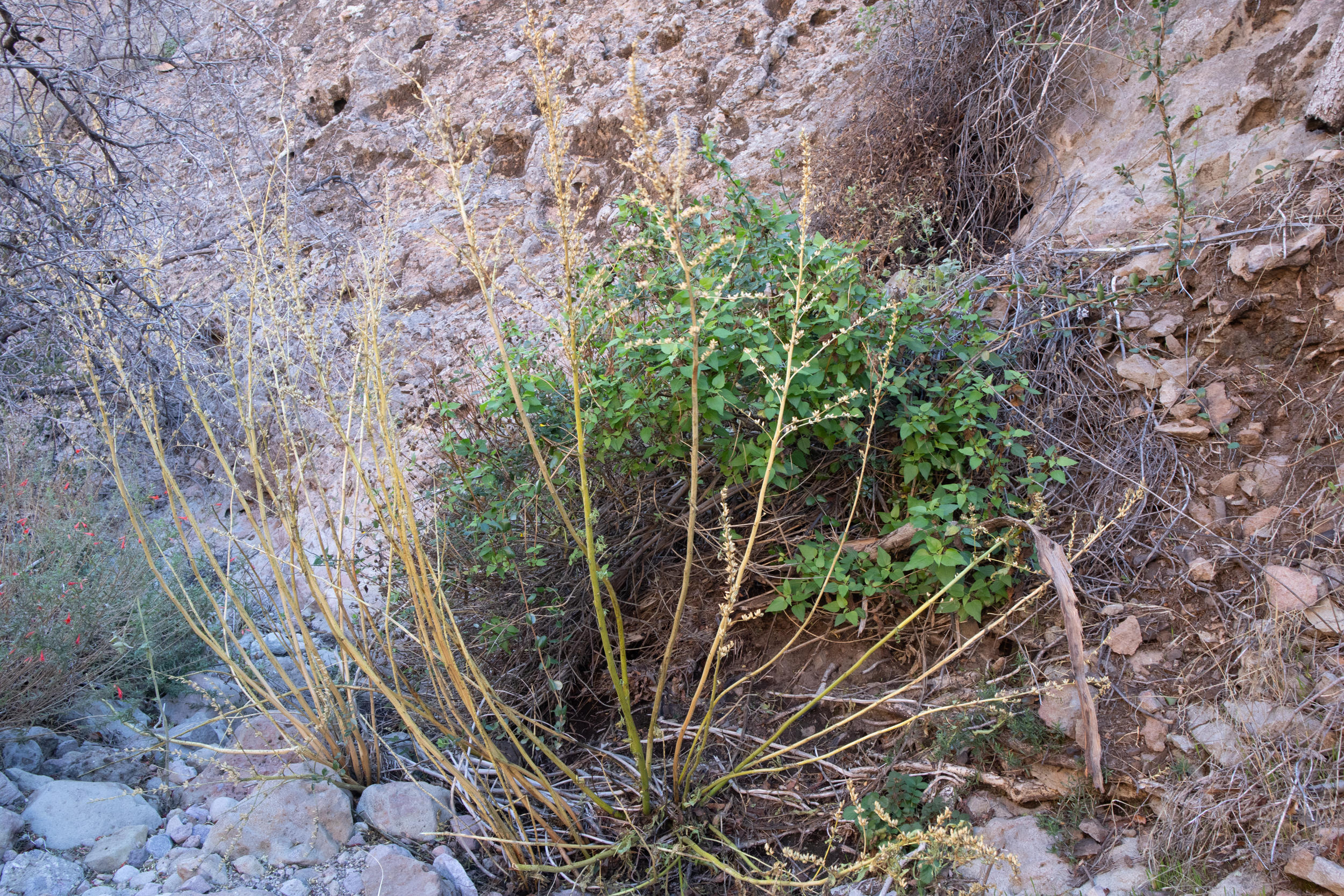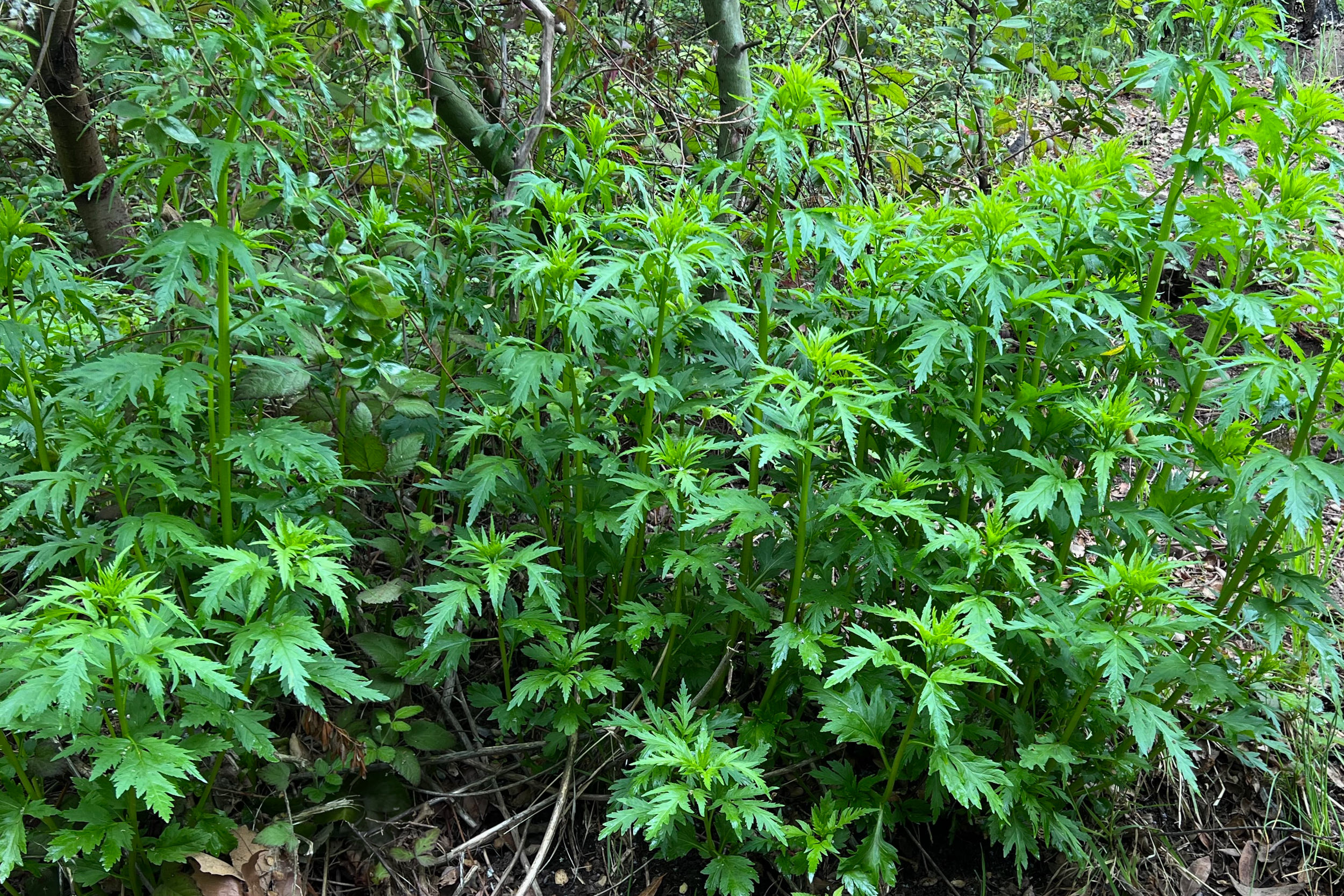Durango Root
- Datisca glomerata
| Common Name(s): | Durango Root |
| Scientific Name: | Datisca glomerata |
| Family: | Datiscaceae (Squash) |
| Plant Type: | Annual |
| Size: | 5 to 7 feet |
| Habitat: | riparian |
| Blooms: | April to June |
| Fire Response: | Germinate from Seed |
Durango Root - Datisca glomerata is a native perennial found in riparian areas across the southwestern United States and down into Mexico. Tall leafy stems that can reach seven feet in height seem to favor locations that if not in the stream bed itself are very close to it. There is nothing else that that looks like this plant - well except for hemp. When the plant dies back, what remains are the tall now brown stalks that may make may make you wonder what this plant is. Without leaves and only the remnants of flowers, it looks like a bunch of long sticks poking out of the ground.
The flowers are small, greenish-yellow, found in dense, terminal clusters (glomerules) — hence the species name glomerata. Plants are confusingly, a combination of plants with male flowers and plants with hermaphroditic (perfect) flowers [FYI: roses are considered "perfect" flowers having male and female parts in the same flower]. Flowers have long stigmatic styles and produce plentiful amounts of pollen suitable for wind pollination. This seems too work quite well as the plant produces large quantities of small tiny seeds.
In spring, the first thing you may notice about the plant are the leaves which are pinnately - think 'feathered' - compound and resemble hemp (hence “false hemp” as another common name for this plant). The narrow leaves are "toothed" and can be quite long - several inches. Below the surface the plant hosts bacteria that fix Nitrogen back into the soil.
Medicinal Uses:
Durango root has a history of medicinal use, especially among Indigenous peoples and early settlers in the American Southwest and northern Mexico.
Laxative / Cathartic: The root was used as a strong purgative, primarily to relieve severe constipation. However, its potency made it dangerous in high doses.
Emetic: Sometimes used to induce vomiting.
External Uses:
Crushed leaves were occasionally applied to wounds or skin infections.
⚠️ Warning: These uses are historical. The plant contains toxic compounds (likely datiscin and related substances), and improper use can cause severe gastrointestinal distress, cramping, and dehydration.
Link to Calflora.net - the best source of this fascinating information.
Name Origin: Durango Root's scientific names Datisca Datis'ca: both Gledhill and Stearn say derivation obscure. Umberto Quattrocchi says: "Perhaps from the Greek dateomai, 'divide among themselves, cut in two,' possibly referring to the ornamental foliage." Despite the passing of 257 years since Linnaeus’s use of the name, the etymology of Datisca has remained unresolved." glomera'ta/glomera'tum/glomera'tus: clustered. glomeriflor'a: having flowers in glomerules.
Contributed by George Sherman
Last modified: April 29 2025 19:57:18.
Number of Images: 11
Image Size Total: 10,238,608
References:
Wildflowers of the Santa Monica Mountains, by Milt McAuleyFlowering Plants: The Santa Monica Mountains, Coastal and Chaparral Regions of Southern California, by Nancy Dale
Chumash Ethnobotany: Plant Knowledge Among the Chumash People, by Jan Timbrook
Leaf Shapes Primer - Botanical Terms for Leaves: - Link

